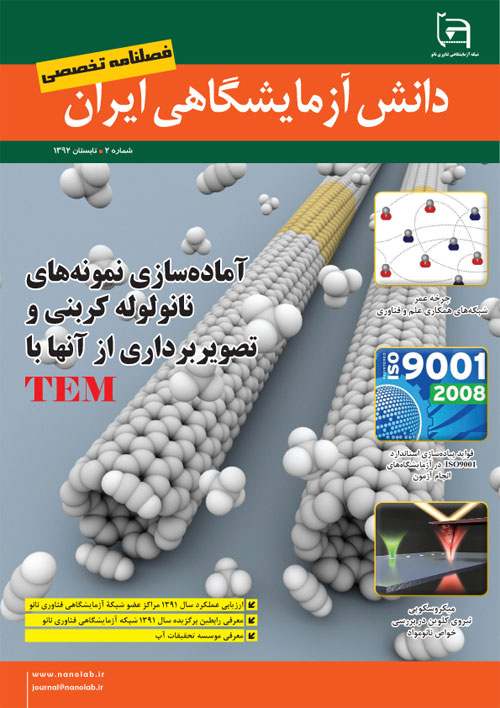فهرست مطالب

مجله دانش آزمایشگاهی ایران
پیاپی 2 (تابستان 1392)
- 56 صفحه،
- تاریخ انتشار: 1392/06/20
- تعداد عناوین: 9
- اخبار
- گزارش
-
صفحه 13
- استاندارد
- مقالات
-
صفحه 50
-
Page 15
Science and technology (S&T) collaborative networks have been considered as effective policy tools to manage the technology and innovation development in recent few decades. Although there are several opinions about the different stages of formation and evolution of a S&T collaborative network, but the literature still lacks a comprehensive theory. The present research develops a model for the formation and evolution of S&T networks –“the Life Cycle of S&T Collaborative Networks”- utilizing the concept of “social technology” and adopting the “technology life cycle” model. The proposed model is simple, easy-to-understand and supported by several preceding theories and models. The last characteristic is what the almost all pervious classifications regarding S&T networks evolution - contributed by other researchers- lack it. In order to examine the proposed model in the real world, seven S&T networks founded in I. R. of Iran from 1995 to 2005 are investigated. Conducting a qualitative inquiry and using multiple-case study method, researcher has collected related data adequately from semi-structured interviews with key informants, observation, and archived documents. The study shows that the model fits well with the case networks and could satisfyingly justify their real status.
Keywords: Science, Technology (S&T) collaborativenetworks, Network life cycle, Network formationand evolution -
Page 25
Although a few laboratories have been implemented the Quality Management System (QMS), the importance of laboratories’ results encourages them to be interested in establishing QMS according to ISO9001. This article describes the reasons and benefits of implementation the standard ISO9001 in laboratories.
Keywords: Laboratory, quality management, ISO 9001 -
Page 29
Carbon nanotubes (CNTs) are allotropes of carbon with a cylindrical hollow nanostructure with the walls formed by one-atom-thick sheets of carbon, which was discovered in 1991 by Sumio Iijima, a senior research fellow at NEC. Since their discovery several methods have been used to produce single and multi walled nanotubes. One of the best methods for their characterization is TEM, STM, AFM and SEM imaging. The current study is dedicated to sample preparation and TEM imaging for CNTs.
Keywords: sample preparation, nanotube, characterization, TEM, CNT -
Page 35
Kelvin probe force microscopy is a branch of atomic force microscopy which enables nanometer scale imaging of the surface potential on a wide range of materials. In this technique, local contact potential difference is measured between AFM conductive tip and the sample surface. Through this way; work function or surface potential of the sample is mapped with high resolution. Kelvin probe force microscopy is a unique method to identify and characterize the surface electrical properties of metals and semiconductors. By this way, very important information about surface potential distribution is obtained which is very important in electrical and optical device performance improvement.
Keywords: Kelvin probe force microscope, nanomaterial, atomic force microscope, surfacepotential, work function


